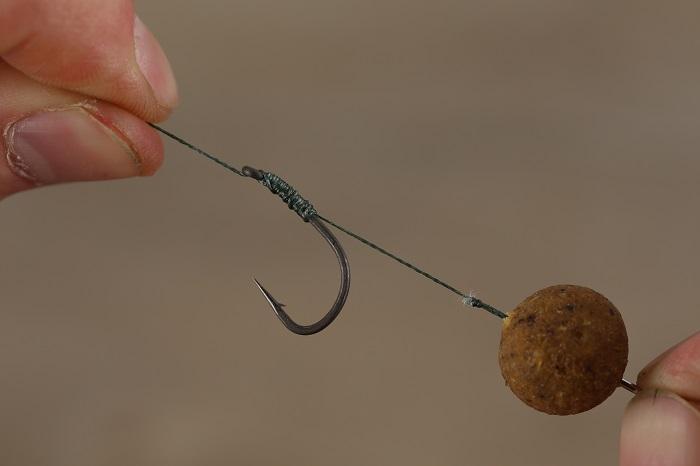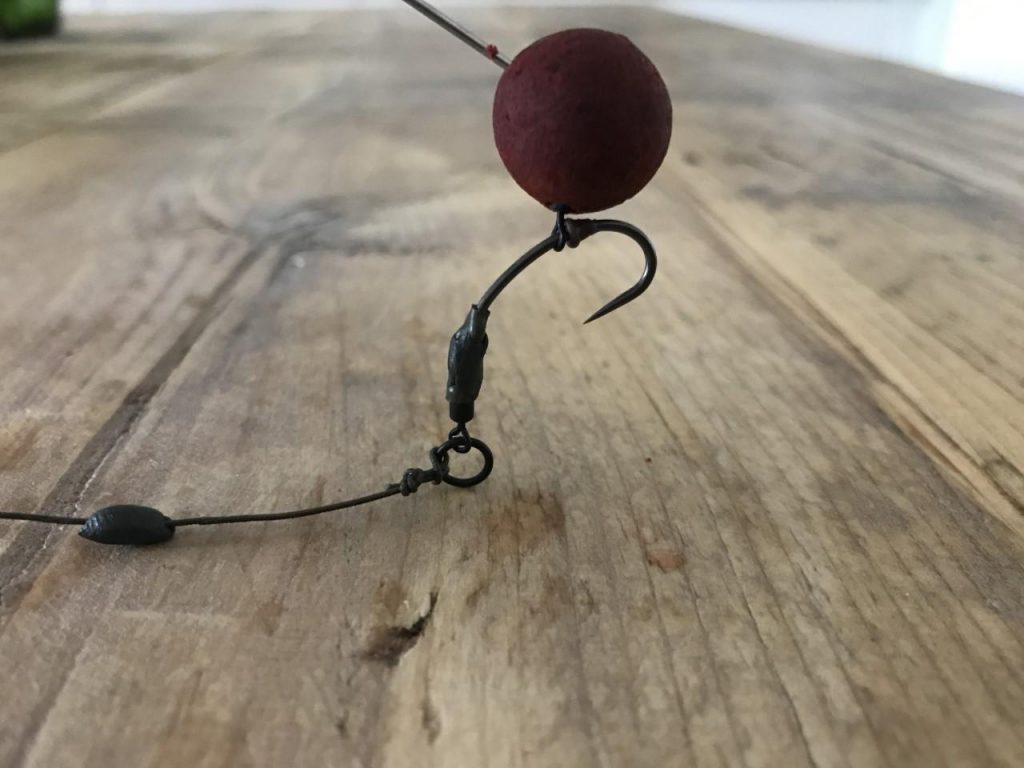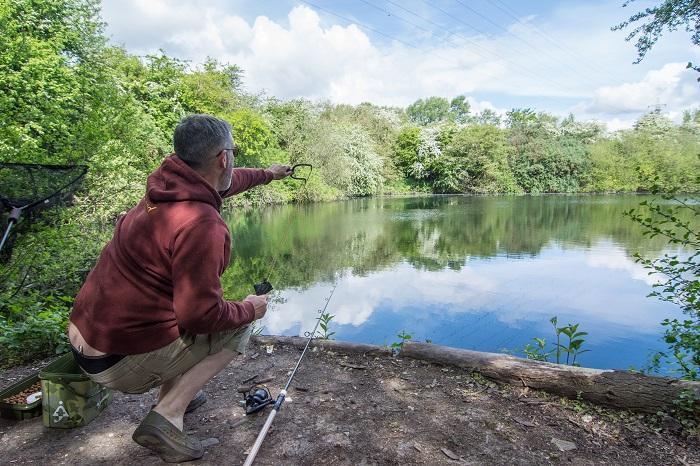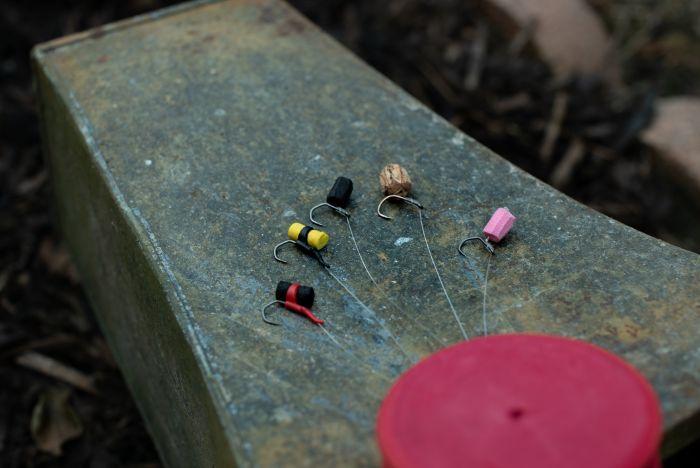Scroll through social media or flick through any carp magazine and you’ll see an endless stream of “must-try” rigs. Every week there’s another miracle tweak, another component you’re told you can’t fish without. The truth? Most of it’s noise. Carp don’t care about fashion — they respond to good mechanics and confident presentation.
Master a few key principles, and you’ll quickly see that four well-chosen rigs will cover almost every situation you’re likely to face. By focusing on simplicity and function, you’ll spend more time fishing effectively and less time second-guessing your set-up.
Carp Rig Selector (at a glance)
- Firm/gravel, bottom baits or balanced → Hair rig (stiff boom + lead clip)
- Weed/silt/debris, pop-ups/wafters → Ronnie (helicopter)
- Hot days, cruising fish on top → Surface rig
- Mid-water feeding, changeable depths → Adjustable zig rig

Core Rig Mechanics Every Angler Should Know
Before worrying about specific rigs, it pays to understand the mechanics that make them work. Once you know these, you’ll be able to look at any rig and decide quickly whether it’s worth tying on.
1. Hooking efficiency
A rig is only as good as its ability to turn and take hold inside a carp’s mouth. Details like hook angle, eye position, the addition of a kicker or aligner, and the way the bait sits all affect how quickly the hook point catches. A sharp hook combined with a rig that flips aggressively will put more fish on the mat.
2. Bait presentation
Your bait must look natural in its environment. On a clean gravel spot, a bottom bait is ideal. In light weed, a wafter or pop-up keeps the hook point clear. Balance is crucial: a bait that just settles “right” is harder for carp to detect and reject.
3. Anti-tangle
If your rig tangles on the cast, you’re not fishing. Boom stiffness, hooklink length, and the choice of lead system all act as insurance against wasted time. A rig that reliably kicks out straight gives you confidence every time you cast.
4. Reset ability
Carp don’t swim around politely. Birdlife, crayfish, and tow can all move your rig. A good set-up should fall back into position if nudged. Swivelling hook arrangements and semi-stiff booms massively improve this reset ability, keeping you fishing even when you’re not watching.
The Four Carp Rigs are Effective in 95% of Situations
1) The Hair Rig (stiff boom + lead clip system)
If carp rigs had a backbone, the hair rig would be it. Since its invention in the late 1970s, it’s caught countless fish worldwide and remains the benchmark against which all other rigs are measured.

The hair rig – highly effective for fishing on gravel and firm lake beds
Why it works:
The hair allows the bait to sit just off the bend of the hook. When a carp sucks in the bait, it doesn’t immediately feel the hook. As the bait is blown out, the hook catches hold in the mouth — a simple but devastatingly effective mechanic.
The addition of a stiff boom ensures the bait is kicked away from the lead, reducing tangles and improving presentation. Combined with a lead clip system, it offers predictable, safe mechanics.
Best suited to: firm lakebeds like gravel, clay, or light silt, when fishing bottom baits or balanced hookbaits such as wafters or snowmen.
Tip: Adjust the length. On small, polished “dinner-plate” gravel spots, shorten the boom to 5–6 inches for precision. In more open areas, 8–10 inches gives the fish a little room before feeling the lead.
Click here to read our step by step guide on how to tie the hair rig.
2) The Spinner Rig (helicopter style)
The spinner also known as the Ronnie rig has become one of the most widely used rigs in modern carp fishing — and for good reason. It’s designed to present wafters and pop-ups just off the bottom, sitting perfectly above light weed, silt, and debris.

The spinner rig is perfect for fishing over light weed or choddy bottoms
Why it works:
The hook is mounted on a swivel, giving it the ability to rotate freely. This means when a carp mouths the bait, the hook point can always find a way to turn and catch. Add in a helicopter lead system, and you have a rig that resets beautifully after disturbance.
Best suited to: tricky lakebeds where a bottom bait might be masked — think light weed, leaves, or silt. Use a wafter or pop-up balanced so it just hovers over the detritus. Recommended to fish helicopter style.
Tip: Experiment with lead size. A heavier lead (3.5–4 oz) creates a more aggressive “anchor,” helping the hook drive home quicker on the take.
Click here to read our step by step guide on how to tie the Spinner rig.
3) The Surface Fishing Rig
Surface fishing is as exciting as carp angling gets — visual, immediate, and often heart-stopping. The set-up is simple, but timing and subtlety are everything.

Why it works:
On hot, still days carp often cruise the upper layers, ignoring bait on the deck. A surface rig puts a hookbait right in their path, where they feel far less cautious. By keeping the line as unobtrusive as possible and letting the bait drift naturally, you tap into one of carp fishing’s most thrilling opportunities.
Best suited to: summer afternoons, calm evenings, and pressured waters where fish shy away from bottom rigs. Bread, mixers, or foam all make excellent hookbaits.
Tip: Always “prime” the swim. Drip a few freebies in little and often before casting a baited rig. Once carp are confidently taking the free offerings, it’s only a matter of time before one makes a mistake.
Click here to learn more about surface fishing, including tips and tactics.
4) The Adjustable Zig Rig
When fish are in mid-water and nothing else works, the adjustable zig rig comes into its own. It’s a versatile tool that lets you search the water column without constant recasting.

Adjustable zig rigs are a game changed when the carp are in the middle layers of the water
Why it works:
The zig positions a buoyant hookbait at any chosen depth, well off the bottom. With the adjustable version, you can slide the rig up or down the line until you hit the exact feeding depth. Carp often sit suspended mid-water, especially on warm, high-pressure days, and a zig puts the bait right under their noses.
Best suited to: waters where carp are visibly cruising but ignoring surface baits, or on bright, warm days when they drift in mid-layers. Perfect for scratching out bites during tough conditions.
Tip: Small, dark foam hookbaits often out-fish brighter ones on zigs, as they look like natural insects silhouetted against the surface.
Click here to learn more about fishing with zig rigs and how to set them up.
Putting It All Together
The beauty of these four rigs is that together they give you coverage across the entire water column:
- Bottom: Hair rig
- Just off the bottom: Ronnie
- Mid-water: Adjustable zig
- Surface: Surface rig
This means that with a modest amount of tackle and know-how, you’re equipped to tackle virtually any situation a carp water throws at you.
Final Thoughts
The carp world is full of rig hype, but simplicity wins. By understanding the mechanics and mastering just four rigs, you remove the doubt and clutter from your fishing.
Spend your energy on what really matters: location, watercraft, and baiting. Keep hooks razor sharp, rigs tidy, and confidence high. Once you’ve nailed the fundamentals, you’ll find that carp fishing becomes far less about chasing trends and far more about enjoying success.
Keep it simple. Keep it neat. Let the carp do the rest.
